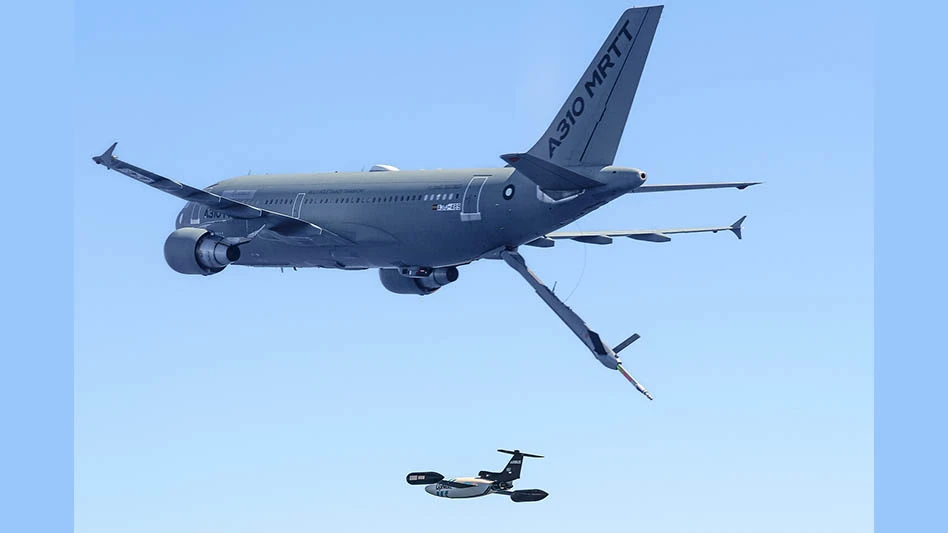
Airbus Defence and Space
Airbus Defence and Space and the company’s subsidiary, Airbus UpNext, have achieved in-flight autonomous guidance and control of a drone using an A310 MRTT tanker aircraft.
In a first step toward autonomous formation flight and autonomous air-to-air refueling (A4R), the technologies demonstrate a significant breakthrough for future aerial operations involving manned and unmanned assets.
These cutting-edge solutions could reduce crew fatigue and the potential for human error, as well as minimizing crew-training costs and providing more effective operations.

“The success of this first flight-test campaign paves the way for developing autonomous and unmanned air-to-air refueling technologies,” said Jean Brice Dumont, head of Military Air Systems at Airbus Defence and Space. “Even though we are at an early stage, we have achieved this within just one year and are on the right track for manned-unmanned teaming and future air force operations where fighters and mission aircraft will fly jointly with drone swarms.”
Known as Auto’Mate, the technologies were integrated on an A310 MRTT flying testbed and on several DT-25 target drones, acting as receiver aircraft, all launched above Spain.
Over the waters of the Gulf of Cadiz, the control of the drone transitioned from a ground station to the A310 MRTT, autonomously guiding the DT-25 to a position approximating that needed for in-flight refueling. The different drones were controlled and guided to a minimum distance of 150ft (around 45m) from the A310 MRTT.
During almost six hours of flight testing, the four drones were sequentially controlled and commanded by artificial intelligence (AI) and cooperative control algorithms, without human interaction.
Auto’Mate Demonstrator technology focuses on three pillars:
- Accurate relative navigation to precisely ascertain the relative position, speed, and attitudes between the tanker and the receiver
- Intra-flight communication between platforms to allow information exchange among the different assets, increasing the autonomy of the system of systems
- Cooperative control algorithms to provide guidance, coordination, consensus and collision-avoidance functionalities to the tanker and the receiver/s
These pioneering technologies, developed by a European team from Spain, Germany, and France, will continue to increase the capability gap among competitors, as well as being re-used in key technological projects, such as the Future Combat Air System (FCAS).
A second campaign is expected toward the end of 2023, exploring the use of navigation sensors based on AI and enhanced algorithms for autonomous formation flight. In addition, there will also be two simulated drones flying in the vicinity of the A310 MRTT to demonstrate multi-receiver autonomous operations and collision-avoidance algorithms.
Get curated news on YOUR industry.
Enter your email to receive our newsletters.Latest from Aerospace Manufacturing and Design
- Trelleborg acquires Aero-Plastics
- Industrial automation products, enclosed encoders
- #61 - Manufacturing Matters: CMMC roll out: When do I need to comply?
- AIX shows aircraft interiors are a strategic priority for global airlines
- Machine Tool Builders Roundtable: Turn equipment into expertise
- No time to waste: How to machine MedTech parts more efficiently
- The 5 Best and Fastest Spindle Repair Services
- Mill smarter, not harder: How collaboration optimizes production






